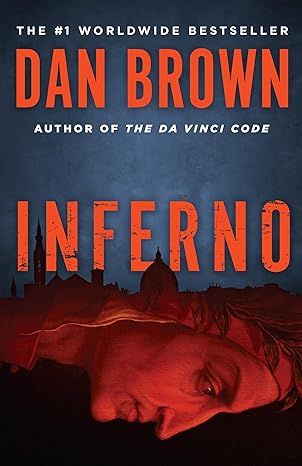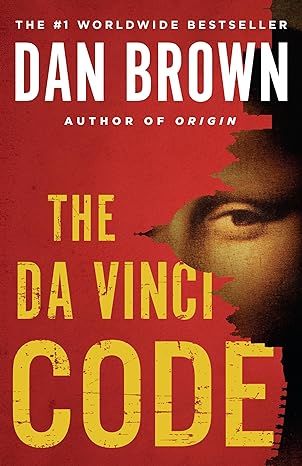Inferno (Robert Langdon)
4.2 out of 5
82,907 global ratings
#1 WORLDWIDE BESTSELLER • Harvard professor of symbology Robert Langdon awakens in an Italian hospital, disoriented and with no recollection of the past thirty-six hours, including the origin of the macabre object hidden in his belongings.
“One hell of a good read.... As close as a book can come to a summertime cinematic blockbuster.” —USA Today
“A diverting thriller.” —Entertainment Weekly
With a relentless female assassin trailing them through Florence, he and his resourceful doctor, Sienna Brooks, are forced to flee.
Embarking on a harrowing journey, they must unravel a series of codes, which are the work of a brilliant scientist whose obsession with the end of the world is matched only by his passion for one of the most influential masterpieces ever written, Dante Alighieri's The Inferno.
Dan Brown has raised the bar yet again, combining classical Italian art, history, and literature with cutting-edge science in this captivating thriller.
576 pages,
Kindle
Audiobook
Hardcover
Paperback
Audio CD
First published May 5, 2014
ISBN 9780804172264
About the authors
Dan Brown
Dan Brown is the bestselling author of Digital Fortress, Deception Point, Angels and Demons, The Da Vinci Code, The Lost Symbol and most recently, Inferno. Three of his Robert Langdon novels have been adapted for the screen by Ron Howard, starring Tom Hanks. They have all been international blockbusters.
His new Robert Langdon thriller, Origin will be out on 3rd October 2017.
Dan Brown is a graduate of Amherst College and Phillips Exeter Academy, where he has taught English and Creative Writing. He lives in New England.
Read more
Reviews
Israel Drazin
5
Another runaway and informative thriller
Reviewed in the United States on May 16, 2013
Verified Purchase
This Dan Brown sixth thriller will be a best seller. Brown, as is well known, is the author of one of the most widely read novels of our time The Da Vinci Code. His worldwide sales have exceeded eighty million copies. In an interview on the comedy Stephen Colbert program, Brown responded to Colbert's remark that his sales were exceeded by the Bible with humor, smilingly saying, "But the Bible has been on sale much longer."
Brown's novels are more than unraveling puzzles and decoding symbols. Besides being a riveting and suspenseful tale of a chase where people are trying to stop Robert Langdon from discovering a secret that in some way involves misdeeds by the Roman Catholic church, which appears to perform acts that harm people and society, Brown's books inform readers about history, classical books, cities, famous people, symbols they see frequently but do not know their significance, like the pyramid and eye on dollar bills in the Da Vinci tale or the mask with the large beak that we frequently see in carnivals, which is explained in this book.
In this novel, Professor Langdon of Harvard University, an expert on art and symbols, wakes in a hospital in Florence, Italy, learning that he had been shot in the head but is unable to recall what happened during the past two days since he was walking across the campus in Massachusetts. He has a vision of a strikingly beautiful woman with silver hair, a woman in her sixties, who is telling him "seek and find." One of his doctors at the hospital is Sienna Brooks, a beautiful woman, in her early thirties. She tells Langdon that he was found carrying no identification repeatedly muttering "Ve...sorry." Langdon learns that Brooks is a genius with a 206 IQ and that people keep trying to kill him. He doesn't know that Brooks is hiding from something or someone. He realizes that the only way to save himself is by finding out what happened during the two days, what he was trying to do and, if it makes sense, do it. Circumstances make it necessary for Brooks to accompany him on his search and they race to escape from what seems to be everyone trying to kill them. All of this happened in the opening of this thriller.
Following Langdon during the quest, readers learn much about the classic The Divine Comedy by Dante Alighieri, which is not a comedy as we understand the term today, but a book written for mass audiences about Hell, a landscape rich in symbolism and iconography, a book that so scared people who read it that the attendance at churches tripled with the fearful after the book's release. We read also about Sandro Botticelli's painting La Mappa in which he depicted the map of Dante's hell, a painting that like The Divine Comedy has a prominent part in the novel. Among much else, we are told about the city of Florence, the city from which Dante was expelled, whose walls were built in 1326 a city that contains paintings with codes hidden in them; Michelangelo and some of his paintings, including a painting of the evil biblical Haman being crucified, like Jesus, and not hung as the Bible states, a painting placed in the Vatican; and other famous painters and artists, as well as Lorenzo de' Medici, the patron of many greats from Da Vinci to Galileo to Botticelli, who commissioned Botticelli to paint a provocative painting to hang over his cousin's marital bed as a wedding gift.
The villains in this tale raise a host of thought provoking questions that will interest readers. The villains seem to have good intentions and seem to base what they are doing on moral grounds. Readers will find themselves thinking about what distorted the righteous basis and honest concerns. But, most of all, like Langdon, they will enjoy unraveling hidden symbols and will enjoy the drama, the chase, and the results.
Read more
5 people found this helpful
THREEKAY
5
Transhumanism Cleverly Introduced to the World
Reviewed in the United States on November 26, 2014
Verified Purchase
The favorite author of the new generation readers has once again struck with his powerful pen, a mesmerizing and wonderful fiction, worth reading many times.
Robert Langdon, the American professor, highly talented and expert in mythological symbols of the old world is called upon by the World Health Organization (WHO) to break the secret code of the famous painting of Dante’s Map of Hell also referred as La Mappa dell’Inferno, to unveil a dangerous plot by a renowned genetic engineering scientist Bertrand Zobrist, to destroy human race. The plot opens in Florence, Italy and winds up in Istanbul, Turkey passing through a series of twists and turns in tracing the final destination of the secret place and date where the scientist proposes to release the dangerous virus to the world, in a Sunken Palace somewhere in the middle of the world. In this journey, the reader is taken through a beautiful journey in gaining exquisite knowledge of Dante Alleghieri’s famous work “The Divine Comedy” composed in early 1300s, wherein he describes his great journey through the various stages of the so-called Hell in Christian religion. This great composition is the most widely read and respected in the world. Dante’s interpretation of his Hell and the Great Plague of Europe in the 1300s (also referred as Black Death) were contemplated to arrive at a disturbing fact that the World is over-populated as of now and needs to downsize the existing population by some means as fast as possible to help the human race to continue for some more centuries. This called for Bertrand’s wild and brilliant idea of creation of highly virulent air-borne vector virus that if enters the human body renders him/her infertile forever. This according to the scientist is the only immediate solution to curb the ever increasing human population that shall lead to widespread calamities, famines, starvation deaths and disasters in the near future. His great leadership on the Transhumanist movement whose fundamental tenets is that we as humans have a moral obligation to participate in our own evolutionary process and use our technologies to create healthier, stronger and intelligent human beings without waiting for the long periods of natural evolutionary process. However, Robert Langdon with the help of WHO and Sienna Brooks, lover of Bertrand Zobrist and a highly intelligent doctor do find the place and date of the release of virus. But will they be able to save the world? One must read this wonderful work of Dan Brown to catch the excitement!
Pros: Some of the greatest places of interest in art and architecture across Italy, Venice and Turkey have been widely described with a lot of information on the history and significance of each and every great monument built that stands as a mark of human intelligence in the ancient period. The author’s outstanding talent in his research abilities and zeal to pursue world history through art and architecture is absolutely unmatched as of today. The reader will remain hypnotized and carried right into the middle of the scenes as long he/she is reading the book. The description of Piazza Del Duomo, the statue of David, Vasari’s paintings, cylinder seals, Death masks, the Medici, Palazzo Vecchio’s Hall of Five Hundred, Boboli gardens, Buontalenti Grotto, the Vasari Corridor, Uffizi Gallery, Mappa Mundi, the church of Dante, the Baptistry of San Giovanni, Gates of Paradise, The Rod of Asclepius, the grandeur of Vatican city, the Doge’s Palace, St.Mark’s Basilica, the Transhumanist Philosophy, the cupola of San Simeone Piccolo, story of St. Lucia’s bones, the origin of the word ‘quarantine’, the Grand Canal of Venice, the Venetian Gothic Architecture, the Byzantine architecture, the history of Horses of St.Mark’s, the Pala d’Oro, the Bosporus Waterway of Istanbul, the mosque of Hagia Sophia (considered as the eighth world wonder), Istanbul’s 300 yr old Spice Bazaar, the tomb of Henricus Dandalo, the Sunken Palace and finally the Dante Symphony by Franz Liszt are some of my interesting topics for study in this book.
Cons: The fact that the great American professor was mentally manipulated through a series of illusions by the World Health Organization to help them decode the secret lying behind in Dante’s painting to save the world was not acceptable to me. Though Bertrand’s vision and cause is worth a standing ovation, the means he chose to achieve the goal seemed to be wrong.
My favourite quote in the book : “The decisions of our past are the architects of our present”
My rating is 5 out of 5
Read more
3 people found this helpful
RaksGato
5
Another winner in the Robert Langdon series.
Reviewed in the United States on July 29, 2013
Verified Purchase
Dan Brown's newest novel, "Inferno," sends symbolist Robert Langdon on another mad dash adventure stretching from the Mediterranean to the Bosporus. I've given it a 5-star rating, because, as usual, Brown delivers on all fronts: interesting subject matter that is painstakingly researched, compelling characterizations, action squared, a plot that moves easily from one scene to the next and drags you along no matter how late it is, inclusion of interesting historical facts, lush settings, and a denouement that leaves you thinking not only about the novel, but about real life. And, of course, top notch proofing and editing.
In other action thrillers, I sometimes feel as though I'm reading a movie script. The action is the focus, rather than the plot and/or characters. Not so with Brown. Here's an author who can handle the never-ending action, the constant danger, the exhausting, breakneck chase, the result of which will not only determine the life and death of the main characters, but perhaps the survival of human life on earth as we know it. The reader WANTS to go on this ride. Wants to feel the unrelenting adrenaline rush, the heart stopping suspense. You want it; you get it; you love it.
For those Robert Langdon fans, this time the action races through the the famed houses of worship of Italy and Turkey, chasing clues from Dante's 14th Century epic poem, "The Divine Comedy," and specifically, the portion titled "Inferno." However, this time there is no religious conspiracy, no sacred quest. This time the subject matter involves the predicament we all find ourselves in: burgeoning world population vs. decreasing resources.
In my youth, there was a movement known by the acronym "ZPG." Over the past couple years, whenever the overpopulation issue is mentioned, I've asked if anyone remembers what this stood for. Anyone under the age of about 45 or so does not. (Zero Population Growth) So this novel hit on an issue that has been of concern to me now for over 4 decades. But, that's another conversation.
The book is nearly 500 pages long (462 to be exact). Long read. This has been a busy month for me, but I still managed to read every day -- in fact, I needed to read every day, as this book is full of the most fascinating twists and turns. Not only twists in the plots, but actually twists in who the individual characters are. Brown masterfully doles out bits and pieces of the solution to his puzzle all along the way, but still manages to surprise you when a character turns out to be the exact opposite of what you believed him or her to be. I'll admit to having one huge, and upon rereading, obvious clue go right over my head. When that part of the revelation came, I had to go back and do a -head/desk- over my oversight! :-) Tricky. And I loved it.
So, I didn't read it all in one day or even in one week. Brown's novels are works to be savored. There is so much fascinating history, interesting concepts and wonderful mysteries that I have to stop every so often just to properly absorb what I've read. I need to taste the delightful flavor of each morsel of the literary puzzle. No. I take my time with Brown's novels. I drag out every Lucius paragraph, longing for the ultimate conclusion all while hoping it will never end.
So, don't I have any complaints? Now, if you usually read my reviews, there usually something.
For instance, starting on page 300, when Langdon and others are in the boat in Venice and come to the realization that the "plucker of bones of the blind" in Zobrist's poem referred to Saint Lucia, and their boatman began relating the legend of Saint Lucia, why didn't they ask him the identity of the doge who cut the heads off horses (another reference in the poem)?
My other disappointment is in the extremely short timeline. If one starts with Langdon awaking in a hospital with memory loss, there are less than 2 days (actually less than 36) hours, I believe, in which this madcap race through the best known tourists sites of Italy to the Haga Sophia and beyond in Istanbul. It includes chases, conversations, motorbikes, boats, and just like Steve Martin and John Candy -- planes, trains and automobiles! Langdon has an injury and short term memory loss. There are two well organized forces chasing him. Yet, in all those hours, which are painstakingly chronicled, the only mention of eating or sleeping comes at the bottom of page 375. Langdon does get to splash some water on his face and change clothes back about chapter 7, but this is after what has already been a long (and for Langdon) forgotten night in a country he cannot remember either traveling to or why he might have done so.
While I certainly don't expect a break in the action for the bathroom, I do expect to see scene that includes a hastily eaten meal, a quick shower -- something to indicate there was time to brush the teeth, revive the system with food, clean up. Pretty basic physical requirements for someone who will be in close, very close, contact with others throughout this adventure. I needed to see something to allow me to believe that an injured man suffering from retrograde amnesia would have the the physical and emotional stamina to do what he does, at the speed of light, for a prolonged time. I was also surprised that only one character in the novel -- and there are several who either know him or know of him -- notices that Langdon does not look his usual dapper self. I found the timeline exciting -- but maybe not so believable as one that allowed even one more day and at least one meal!
However, Brown's descriptions of the places visited in the novel are rich and full. One of my favorite sections comes on page 300, the third paragraph in Chapter 84:
"This was a world divided, a city of opposing forces -- religious, secular; ancient, modern; Eastern, Western. Straddling the geographic boundary between Europe and Asia, this timeless city was quite literally the bridge from the Old World . . . to a world that was even older.
Istanbul."
You run this race thinking you know what's at stake and what will happen if the 'good guys' don't win. You don't. Believe me, the revelations never stop coming. And, best of all, it will make you think.
Read more
8 people found this helpful
Ed Barton
5
Perhaps the Best in the 4 Book Langdon Series
Reviewed in the United States on May 27, 2013
Verified Purchase
While many reviewers seemed to have a very negative view of the book, and certainly with some reason - to be discussed, this is perhaps the best of the four "Robert Langdon" books written by Brown. It managed to earn that praise based on the following factors:
*The last 150 pages of twists, turns, thrills and shocks *The topical and real socio-economic factors discussed *The plausible science
Based on a transhumanist's fascination with the Divine Comedy of Dante, the book - especially the first 300 pages - follows the relatively well-worn theme of the genre. In fact, I would make the argument that the first 250 pages are almost a bit of a slog through the book. I actually put it down and went to bed - which is a first for a Dan Brown book. There are the typical chases, character development,integration of the sights and sounds of Florence, and some (but less) symbology that permeated the original series.
Stylistically, it follows Dan Brown's approach of short chapters, multiple fonts, a lot of running around,"hyper-activity", and relatively long soliloquies when there is actual meaningful dialogue. If you didn't like the style before, there's no reason you will like this book any better. In fact, I would argue that this book contains fewer "ah-ha" moments in the first 300 pages than any other of the series. Even the antagonist - a figure seemingly inspired by an Ian Flemming book - seems somewhat contrived and rote.
While the socio-economic elements are thought provoking, the methodology that is used to convey them is sometimes a little preachy, and similar to Brown's other books, the author appears to be conveying many of his own beliefs and ethics into the discussion. The science is generally glossed over (at least the medical piece), but is interesting and plausible enough to keep the reader engaged - unlike some of his other works.
Endeavoring to avoid spoiling the plot at all, I will state that the last 150 pages are masterful thriller. There are more curve balls thrown than you will find at an MLB game, and continuing the analogy, the crafty veteran pulled out the game when you really thought he had nothing left in the tank. The entire last 2-3 hours of reading was classic thriller - and the book was near impossible to put down. The "moral" of the story is topical and will get you thinking about real world issues - unlike the Da Vinci Code or the Lost Symbol, and if read with open eyes, the reader will come across with having been educated, entertained and challenged in their beliefs.
The book is entertaining enough for the first 300 pages, and definitely worth the price of admission to get to the last 150. It was those last 150 pages and the deeper messages that came through that leveraged this book from a 4 to a 5 star review.
Read more
Diana Faillace Von Behren
4
Formula for Commercial Success
Reviewed in the United States on May 24, 2013
Verified Purchase
Ah well! The battle rages on. The premise is a simple one. Is it commerce? Or is it art? Let's put it this way, if you want to actually make an extremely lucrative living out of writing books, author Dan Brown (
9 people found this helpful
KB
4
Have a bit of fun. 3.5 stars
Reviewed in the United States on July 4, 2020
Verified Purchase
Yes oh yes, the twists and turns are endless. Yet another plot twist takes place, so many now that I've rolled my eyes at the latest one, and even think to myself that I might find an epilogue AFTER the epilogue containing one final twist. It's implausible at times. The structure of the story is as practiced as the act of writing thrillers itself. It's chapters, over one hundred in total (and sometimes just a single page long) more often not end in yet another cliffhanger. Inferno a story that is predictably unpredictable. I haven't read the previous Langdon novels in years, so i could be wrong, but I felt like Dan Brown had to stretch at times to include the Inferno in the narrative, at least moreso than he had to with the plot devices of the other Langdon novels. For all intensive purposes, this is not a great novel. And yet it boasts nearly THIRTY THOUSAND reviews on Amazon. The answer is obvious. Many of us don't long attention spans. Many of us don't care to do deep soul searching or philosophical pondering when we read a novel. It's why Stephen King, who famously referred to his work at the "literary equivalent of a big mac and fries," is so damn successful. King, or Brown in this case, do write in a way that can make us think or feel, but does it in such a way that it flows easily within the narrative and doesn't disturb the fictional story. And kudos to them for being able to deliver what the majority want. Inferno had quick chapters, good for those (most of us) with short attention spans , constant cliffhangers, and non-stop tension and suspense. Reading it is a bit of a rush. It's what it's meant to be. Don't think too deeply, and if you're inclined, research your "facts" after finishing, but while reading Inferno, sit back, breeze through it, and enjoy the book the way you're supposed to. Yes, you will have to endure some eye-rolling plot twists, and you'll have to suspend belief at times, but what's wrong with that? Like anything else, you'll lose the fun of something by taking it too serious. So just sit back, enjoy the ride, and have fun. I did. Will I read Origin someday, and thus complete the Robert Langdon novels? I certainly will, and if anyone cares to make a bet, I'm willing to wager I'll have a blast reading that one too. I originally had this rated at 3 stars, but I'm giving it four based on the immense amount of geographical, historical, and biographical research that must have went into this book. As a bit of an aspiring writer myself, I can only be in awe imagining the amount of time, effort, thought, preparation, and distribution that went into this one single novel, from the publishers to editors to translators, it's truly mind-boggling. and of course, the book was a smashing success, as it was always meant to be. Kudos to Dan Brown, for finding his niche and writing his way to enormous heights.
Read more

Rafael J Salin-Pascual
4
A TRAVEL BETWEEN TIME AND SPACE
Reviewed in the United States on June 15, 2013
Verified Purchase
INFERNO (A Novel). Dan Brown 2013. Doubleday, Random House.
The darkest place in hell For Those Who Are reserved Maintain Their neutrality in Times of moral crisis. Dante Alighieri
In his latest novel, Dan Brown, writer and American cryptographer author of Da Vinci Code, one of the most read books in this century, presents a journey through different worlds, different times, and spaces by which his character Robert Langdon goes in search of a place. Daw Brown character, is a professor of history and art of the prestigious Harvard University. Dante Alighieri narrates the novel taking as the basic framework of the poem "The Divine Comedy". The author's style has worked, to the extent that it creates the illusion of a "treasure hunt", with some clues, some real and some fake, that locate the reader immersed in big mazes, where the characters can disappear and die. Of course there is not one hundred percent true. Although there is a lot of fantasy itself framed by historical events. This is not an historical novel, however, encourages to continued historical and tourist routes, which all readers of thrillers and suspense are prone to compare. In my case, having been several times in the cities in which the narrative unfolds, Of course INFERNO novel, is a story of suspense, secret key, and a heroine character is reminiscent of the Millennium trilogy, Lisbeth Salander. Her name is Sienna Brooks. She will be the equivalent of a female Virgil the poet who accompanied Dante through hell, purgatory and paradise. She had and IQ of 204, thin, bald, medical doctor, specialist in martial arts, but especially a "drop out". The story is developed in three paradigmatic cities of Western culture: Florence, Venice and Istanbul. The suspense and epic storyline is supported by the account of the search for a place where going to change forever the history of mankind. Professor Robert Langdon wakes up groggy in a hospital in Florence not knowing what has happened in the previous night. How he is in Florence, when their habitual residence in the city of Boston. A pair of Italian doctors, one old, and a thin woman, blonde with a ponytail. They were reporting that he was the victim of a gunshot to the head, which caused a concussion and therefore retrograde amnesia. Robert know who he is, but is disoriented in time and space. Soundly Just, there is a woman with pointed haired, portly and tall, armed with a machine gun in black combat fatigues with green bracelet, breaks into the hospital, firing in the direction of the Professor. Robert watches as the older doctor dies, while the young doctor, speaking perfect English in addition to Italian, rescues him from that scene. She is Dr. Sienna Brooks, a dynamic lazarilla for an amnesiac Robert; she addressed a taxi just outside the hospital, while being pursued by a command through the streets of the city of Florence. In the department of Dr. Brooks, she indicated that in his clothing it was found a cylindrical object, with engravings that indicate bio-danger. The cylinder could be open by the Doctor's thumbs that object is a small projector that reproduces a painting a passage from Dante's Inferno. The painting is called: "The map of hell" and the author is Botticelli, the same painter of "Spring and the Birth of Venus", however Robert Langdon specialist in medieval and Renaissance art, immediately realizes that the painting has been altered. There is also a distributed key letters in some of the bodies of the sinners in the nine rings of Dante's Inferno. At the time they intend to decipher the meaning of the word CATROVACER, Dr. Brooks notices that have arrived already two black vans with a command, of black uniforms, surrounding the building where both of them are located. The couple must flee, and this will be the tone of the novel, the two are maintained by continuous getaway, the great escape, which is also seeking and found (The Quest). Meanwhile we learn that in the Adriatic Sea, an ultra-modern ship with a group known as The Consortium is in some way involved in what happens to Dr. Langdon. The boat is called "The Mendacious", that latter on we will find out, that has its Latin roots in something equivalent to cheating. The Consortium provided protection for one year to a scientist millionaire Bertrand Zobrist dedicated to genetics and to the Malthusian studies. This character was trying to convince the scientific community, foundations, benefactors and advisors of governments and even the World Health Organization, and especially to its director Dr. Elizabeth Sinskey, that should stop the exponential growth of the human population, because if not to do so in less than 100 years there will be a catastrophe because of the lack of resources for nutrition, health, work, education, water, energy, etc. Bertrand makes a remembrance, that after the Black Death epidemic, that killed one third of the humanity of that time, there was the phenomenon of the Renaissance. Although their mathematical predictions are correct, their proposals are never heard, because there is an ideological bias, cannot hear Dr. Bertrand Zobrist. The interesting thing about the novel is the deployment that Dan Brown makes historical knowledge, monuments, sculptures, and paintings in the three cities paradigmatic of Western culture. It also highlights the knowledge that he has on issues like genetics, advances in molecular engineering, psychopharmacology, psychology and updating of mass communication tools such as the Internet, virtual communication networks, gadget of different types and companies that are responsible for the massive deception. These companies like The Consortium, do business with things so personal and individual, for example, develop a false event, type a Scientific Congress, a business appointment, surgery, etc. for a wealthy men in order to have extra time for an affair. But these companies can build fictional events with an impact on the politics of nations and even the outbreak of armed interventions, handmade pretexts designed, as was the case of weapons of mass destruction of the Persian Gulf War. It is an entertaining read that through a streamlined narrative introduces us to the world of culture, in a stage of humanity where religions came together, geniuses and ambitious beings, usually politicians and bankers. Something similar to what happens at today time. We visit extraordinary places like cathedrals, palaces, gardens, and all framed in the poem of the divine eternal work of Dante Alighieri "The Divine Comedy". There is an old saying that has been attributed to Dante: "Remember tonight is the beginning of the eternity", this statement, is great understanding after the first kiss.
Read more
2 people found this helpful
doc peterson
4
Marvelous detail of Italy and the renaissance world - a mediocre story
Reviewed in the United States on January 2, 2017
Verified Purchase
If you are familiar with Dan Brown (
6 people found this helpful
D. D
3
Inferno Simmers, But Never Brings The Real Heat.
Reviewed in the United States on June 26, 2015
Verified Purchase
The story starts with a sedate Robert Langdon waking up in a Florentine hospital unaware of where he is, or how he’s arrived. Things heat up quickly when the assassin, Vayentha shows up and starts shooting hospital staff—her true target being Langdon himself.
He escapes assisted by Sienna, a doctor treating Robert Langdon’s apparent amnesia while trying desperately to save the professor from the unexpected death so many hospital staff have just succumbed to.
They dash through alleys. Langdon still woozy from the medication, falls more than once as Vayentha gives chase. After racing through a winding labyrinth of European streets and alleyways, Sienna finally helps Langdon into a waiting taxi, and they speed off, ducking their heads in the backseat, under gunfire from an assassin’s pistol.
This exciting opening is just what we’ve come to expect from Robert Langdon novels, and author, Dan Brown never lets us down in Inferno.
I enjoyed Inferno’s suspense and fast pace. The book was a cycle of deceptions and how they played out in Robert Langdon’s faulty cognition until much later in the novel when all was finally revealed—a bit too conveniently if you ask me.
The narrative focuses on the diabolical plans of a man of murky intentions as he tries to save the world from itself, leaving Robert Langdon, Sienna and the Director of The World Health Organization to piece together the puzzle of his fiendish plot.
Inferno is however built from the bones of The Da Vinci Code. There is mystery, an allegation of criminal guilt toward Robert Langdon—the book’s protagonist, globetrotting and a kooky conspiracy that only the world’s most genius art professor, with a preclusion for symbology could solve. That said, this story ain’t no Da Vinci Code.
The suspense is in tact and the chase scenes too—so are the lengthy history lessons and travel brochure’s overwrought in every Dan Brown novel I’ve read, admittedly only two. But this story espouses a sinister agenda that isn’t exposed until damn near the last page, just like a true suspense thriller should. The difference being that Da Vinci Code supported themes of religious freedom, tolerance and difference, but those are just concepts.
The shocking revelation at the end of this novel could have real world implications as it may support the agenda of some secretive and despotic trans-humanists. And yes there is a spoiler coming in later paragraphs about just what that sinister plot is. So only read on if you don’t mind spoilers. Don’t say I didn’t warn you. But first lets take a look at character in Inferno.
I feel so distant from Langdon and his experiences. He is a flat, never changing character who can be expected to be the same in nearly every scenario. The only emotional connection he seems to portray is an “ungrounded” feeling he experiences during the rare times he doesn’t “get” something, or a bit of romantic candor for Sienna, this adventure’s travel mate.
There were moments of supreme thrill during action sequences and the suspense was sufficient to keep the pages turning, but the overall effect was disappointing because I felt disconnected from Langdon. That disconnect translated to the character’s responses to the action of the plot.
He seemed to only act out of moral duty like a stoic proxy determined to correct an egregious error rather than an impassioned hero who was personally connected to the developing situation. Even after discovering just how diabolical the antagonist’s plans were, Langdon only slightly registered a feeling. It was the same thing I felt when reading this character, an ungrounded disconnect. Like a ship buoying up and down as the sea’s churning lurched it. And this was 90% of the way through the book, according to my kindle reader.
Throughout this novel I couldn’t help but think the emotions were lacking. The only real emotional tug I felt was when reading Sienna’s back story, which made me somewhat sympathetic toward her due to her life-long isolation and Stockholm-syndome-like attraction to the villains plot.
Sienna offered great interests to readers as an eccentric genius and surgeon/actress, but her eventual moral conflict and role reversals were a bit much for my taste and occurred to quickly for the effect to settle in. She came off a bit unbelievable. I’m surprised that an author as touted as Dan Brown could possess such renown for novels featuring such inconsistent characters.
Zobrist was passionate when speaking with Dr. Sinskey about his plan. The narrator alluded to him having a charismatic persona, but in scenes where he should have stolen the show, scenes where he was revealed to be bisexual and in love with a male character, even he didn’t deliver the powerful emotions I would have liked to see in this work.
A bit too unbelievable was the provost’s dream factory cruise liner, as I call it. A man who dabbles in glorified street performances that are meant to secure the most secretive and wealthy people on earth from both public and private scrutiny is a far fetched concept, even in fiction. This guy with his turgid demeanor and high-tech yacht was a bit Willy Wonka meets the Wizard of Oz. You have to remember he works in the private sector. He isn’t CIA or MI6, yet his authority is so far reaching and his connections so numerous that he brandishes more power than the director of the World Health Organization. I’m just saying.
Brown is known more for his twisty plots and suspense than for conveying powerful emotion, but his characters suffer as leveled sketches, rather than round personalities. An author of his reputation for delivering highly readable fare should be fill his characters with pathos and panache. It appears that his over reliance on careful plotting may be the reason that the extensive research he does for each of his novels doesn’t translate into rounder characters. Inferno was is different.
The thematic statement emerged in the end and it was frightening. The narrator seemed to suggest that world depopulation, even by dastardly deeds, is an imminent necessity to secure the survival of humanity. Not only does that statement emerge only within the last 20 pages of the novel, but it comes as a unexpected strike to the face, after this suspenseful narrative winds the globe taking readers on a thrill ride, only to drop them off at the feet of a heavy handed, and summative narrator challenging them to try the concept of enforced sterility as a means of population control on for size. The other 500 or so pages of the novel may have been a subtle attempt by the narrator to develop the problems of overpopulation aimed at allowing the reader to decide if the unethical practice may be a good alternative to environmental collapse before the final appeal. Admittedly, I may be reading too much into narrative.
The cavalier and mishandled appeal shows the fictional leader of the World Health Organization espousing this view—a stark reversal of the opinion she had given only a page or two earlier where she was a staunch opponent to the sterility plague that had infected the world’s population. Maybe an attempt at adding fictional authority to an unlikely appeal to readers’ cognition?
There was a moment where it seemed the author himself was speaking directly to the readers about a team of real world scientist manufacturing a dangerous strain of H5N1 (Deadly flu in common parlance) just for academic pursuits. The reference shows a picture of an out of control human science industry, misappropriating technology without invoking wisdom to guide their efforts. It comes off as evidence of the notion that human beings are morally obligated to use technology for the purpose of producing a post human race, based on trans humanism theories.
The narrator supported the idea that an international and intellectual global elite should make forced population control a reality. Whether Brown was going for this effect or not, it is an eerie thought to think that those conspiracy theorists on YouTube may be right. Hell, they were right about the government wiretapping all of our phone lines, but nobody believed that until the Snowden papers were released.
Scary thematic statement aside, the heavy-handed and lights-up-in-the-middle-of-a-concert approach to addressing the theme was jarring and inconsistent with the rest of the narrative.
Despite the inconsistencies in the novel, I enjoyed the thrill ride until the end where I found myself wondering, “Is Dan Brown really saying we should support depopulation through genetic tempering?” Go figure.
If you like suspenseful stories filled with chases and codes to be cracked, you’ll love Inferno. If you’re more of an emotional arch and round characters delivered in close perspective type, but you still need some mystery, I’d suggest Paula Hawkins’s The Girl On The Train.
Read more
8 people found this helpful

scot16897
3
Non-spoiler - Engaging at times, but ultimately frustrating
Reviewed in the United States on May 25, 2013
Verified Purchase
This is a tough review to write, because my opinion of the work changed repeatedly as I went along. At times exciting, slow, intelligent, sophomoric, surprising and frustrating, this novel was better than the
17 people found this helpful
Top Dan Brown titles
Best Sellers
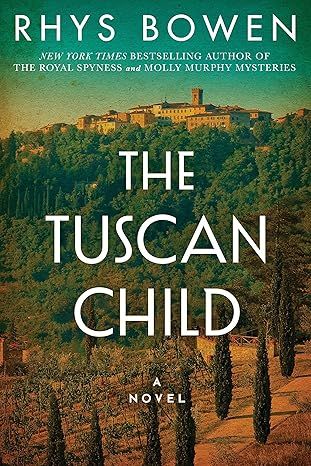
The Tuscan Child
4.2
-
100,022
$8.39
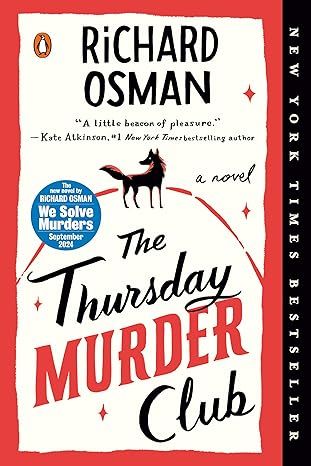
The Thursday Murder Club: A Novel (A Thursday Murder Club Mystery)
4.3
-
155,575
$6.33
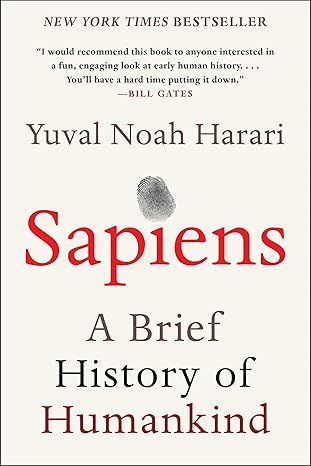
Sapiens: A Brief History of Humankind
4.6
-
140,302
$13.49
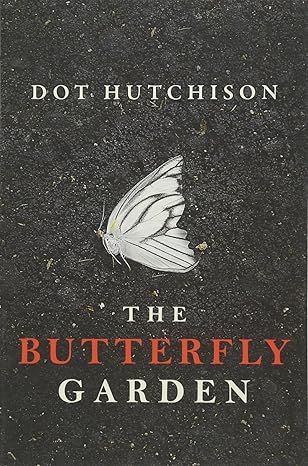
The Butterfly Garden (The Collector, 1)
4.3
-
88,556
$9.59

Things We Hide from the Light (Knockemout Series, 2)
4.4
-
94,890
$11.66
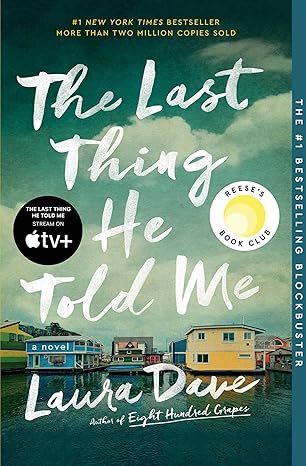
The Last Thing He Told Me: A Novel
4.3
-
154,085
$2.99

The Perfect Marriage: A Completely Gripping Psychological Suspense
4.3
-
143,196
$9.47
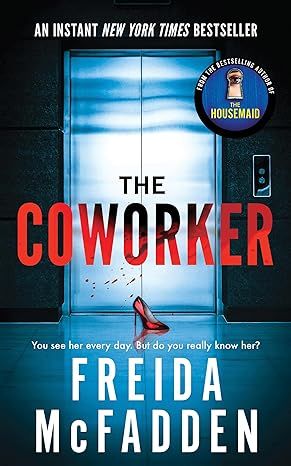
The Coworker
4.1
-
80,003
$13.48

First Lie Wins: A Novel (Random House Large Print)
4.3
-
54,062
$14.99

Mile High (Windy City Series Book 1)
4.4
-
59,745
$16.19

Layla
4.2
-
107,613
$8.99
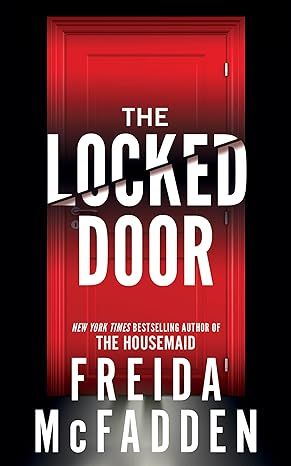
The Locked Door
4.4
-
94,673
$8.53
